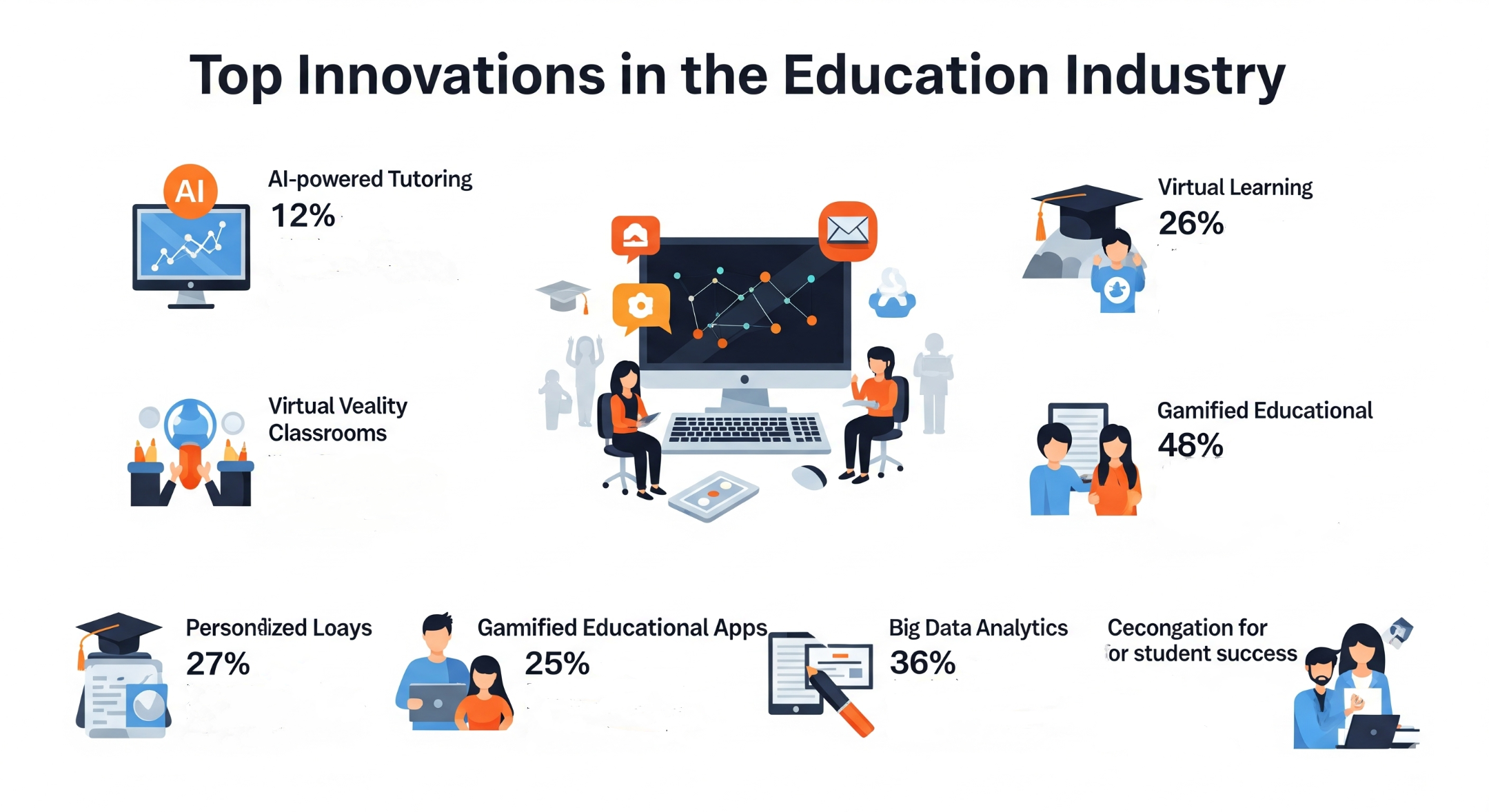
Introduction to the Top Innovations in the Education Industry
Technological advancements brought top innovations in the education industry and now books have not remained the only way to educate a student. These advancements have made learners’ lives more creative and empowered them to improve the society.
Moreover, they can also enhance their skills through project-based learning derived from various educational tools and services.
These top innovations in the education industry have proved that the traditional style of education may not be irrelevant, but it is not the only way to become an educated human being.
Let’s discuss about various aspects that lead us to this conclusion:
Why Top Innovations in the Education Provides a Better Environment for Students?
Many people criticize traditional way of education which is heavily dependent on textbooks as it delves students into rote learning and does not promote critical thinking, problem solving, and creativity.
But as we know, all these skills are essential in today’s competitive world. Therefore, learning beyond textbooks is necessary for learners to develop their skills for the future workforce.
Let’s understand it in detail:
The Need for Top Innovation in the Education
Education is the fundamental platform for developing a nation’s socio-economic strata. For instance, it provides a better environment to achieve desired objectives and provide the medium to communicate and collaborate with the rest of the world.
Therefore, learners need to enhance their skills based on modern technology and be capable of them for the future workforce. For this, they need innovations in the classroom that promote futuristic skills and help them to learn effectively and perform better in their academic and non-academic activities.
The Positive Change: Getting Instant Information
One of the biggest changes that has come about through using technology in the classroom is that now students get to know about any important information immediately. They quickly prepare themselves for the changes and their desired goals.
Furthermore, they are now achieving knowledge of various subjects, conduct research, and access materials beyond textbooks. This has not only reduced their overindulgence on conventional textbooks but also enhanced their ability to integrate textbook knowledge into real-world applications.
Digital Content Accessibility
Innovations in the classroom provide digital content for the learners such as like e-books, recorded videos of lessons, scholarly articles can make great impact of learners’ learning and facilitate them to learn at their own pace. Learners can access the world’s best learning materials become active participants participate through practical learning on these online platforms and evaluate themselves in comparison of the others in this era of technology.
Enhancing Collaboration and Curiosity
Innovation in classroom enhances curiosity and collaboration learning methods entails presenting students with real world issues or tasks and challenging them to work to find solutions through research critical thinking and hands-on practice. Students can enhance their skills through creativity and be capable to compete in the technology-based world. They get a chance actively team up with industry professionals and organizations.
Increasing instructional capacity, efficiency, and productivity
Innovations in the classroom produces a significant change in teaching and learning which leads to better student learning, so innovations in education are intended to raise productivity is determined by estimating the outcomes obtained vs the invested effort to achieve the result. Therefore, we can achieve more with less effort and productivity.
Connecting Classroom Learning to The Real World
Innovations in classroom enhances the students to get best skill to learn beyond books and removes physical classroom boundaries bringing real-world experiences directly to students. Educational technological tools help foster critical thinking by exposing students to diverse perspectives and practical challenges in their desired field preparing them for future problem-solving and career decision-making. Prepares them for the future workforce in this technology-based era.
Preparing Students for the Modern Workforce
The traditional textbook method learning is not enough for the learners to compete in this modern technological world but the need to enhance knowledge about the technological tools and their usages. Thus, innovations in classroom prepare the students for a platform that gives best skills to learn beyond the books. Additionally, students access adequate technological knowledge for their desired future educational goals.
Best Skills to Learn Beyond the Textbooks.
-
Technological competency
Innovations in the classroom help students develop technological competency. Especially about the navigate platforms, productivity tools, online collaboration and communication.
-
Data management
Another key point is to access, organize, and analyze data-skills that are crucial for making informed decisions in the workplace.
Additionally, students achieve knowledge about the information for data, its uses and storage, sharing, etc. Mastering data analysis tools helps the learners interpret market trends and guide strategic business decisions.
-
Adaptability and Flexibility
Innovations in classroom enables students quickly learn and use technological tools for their future. Mastering in these smart tools enhance skills for the modern technological world. Furthermore, they also provide flexibility beneficial for advanced learning.
Conclusion: Get Top Innovations in the Education Industry
Top innovations in the education industry are placed on developing young brains and not simply their academics. There are best educational apps for every student to prepare not just for clearing grades but to learn. Beyond textbooks the classroom help enrich a student’s experience about education. Moreover, they can simulate and experience real-life applications of theories that they have learned.
Therefore, these innovations prepare the students to compete in the modern technological dynamic world. For instance, they can contribute the future through economic and social development activities. This will all in all make a better environment for the coming generations.
